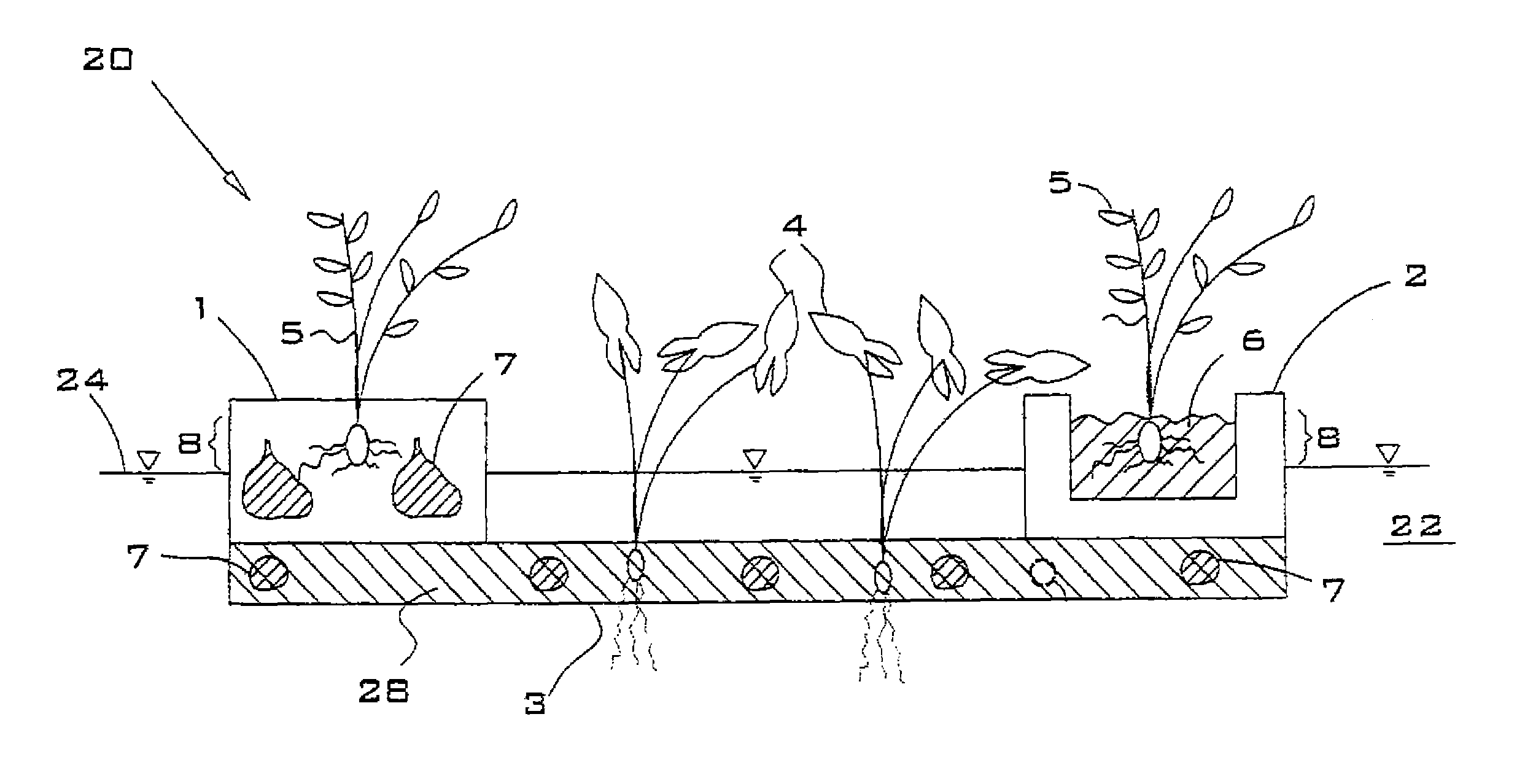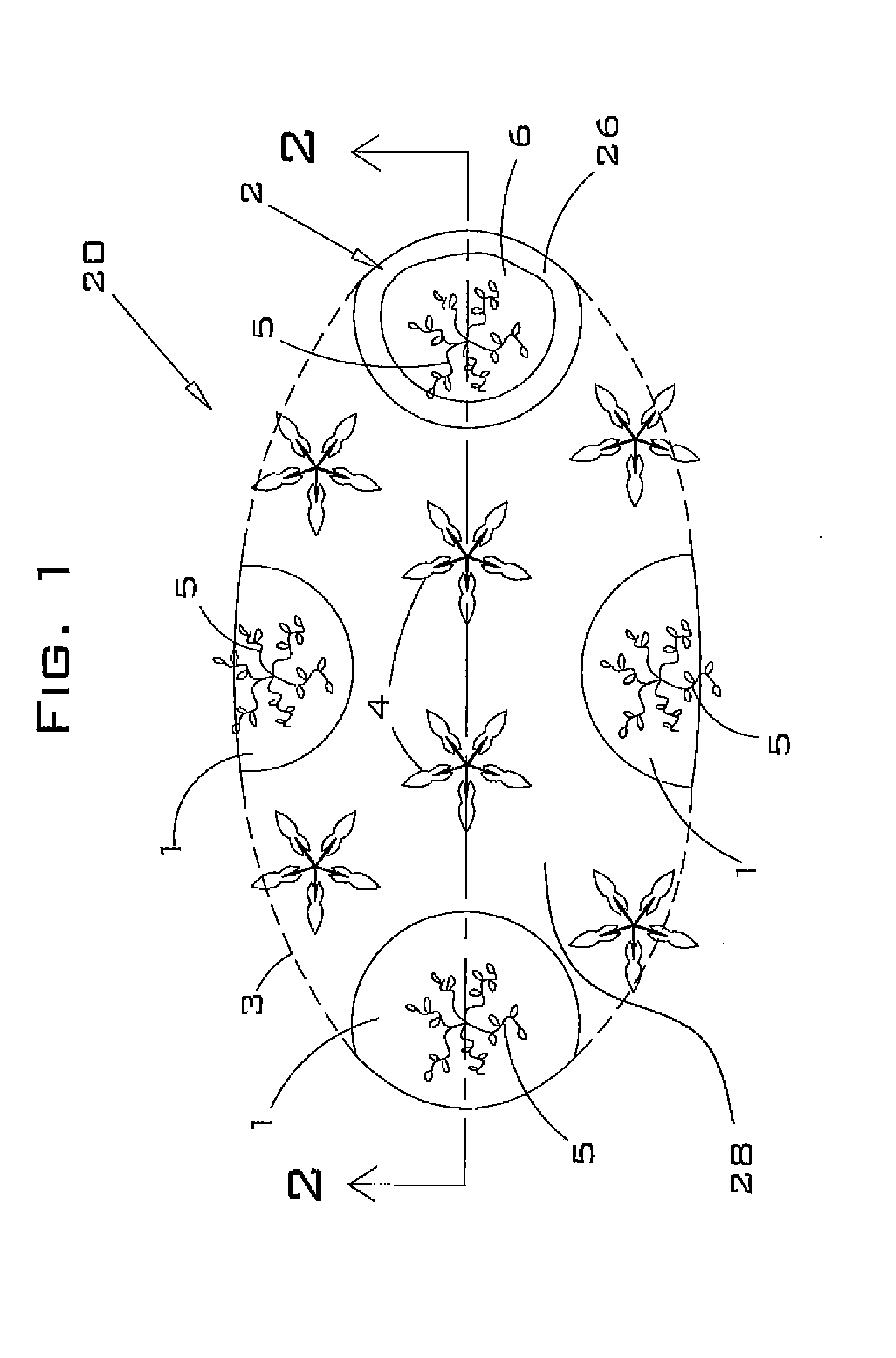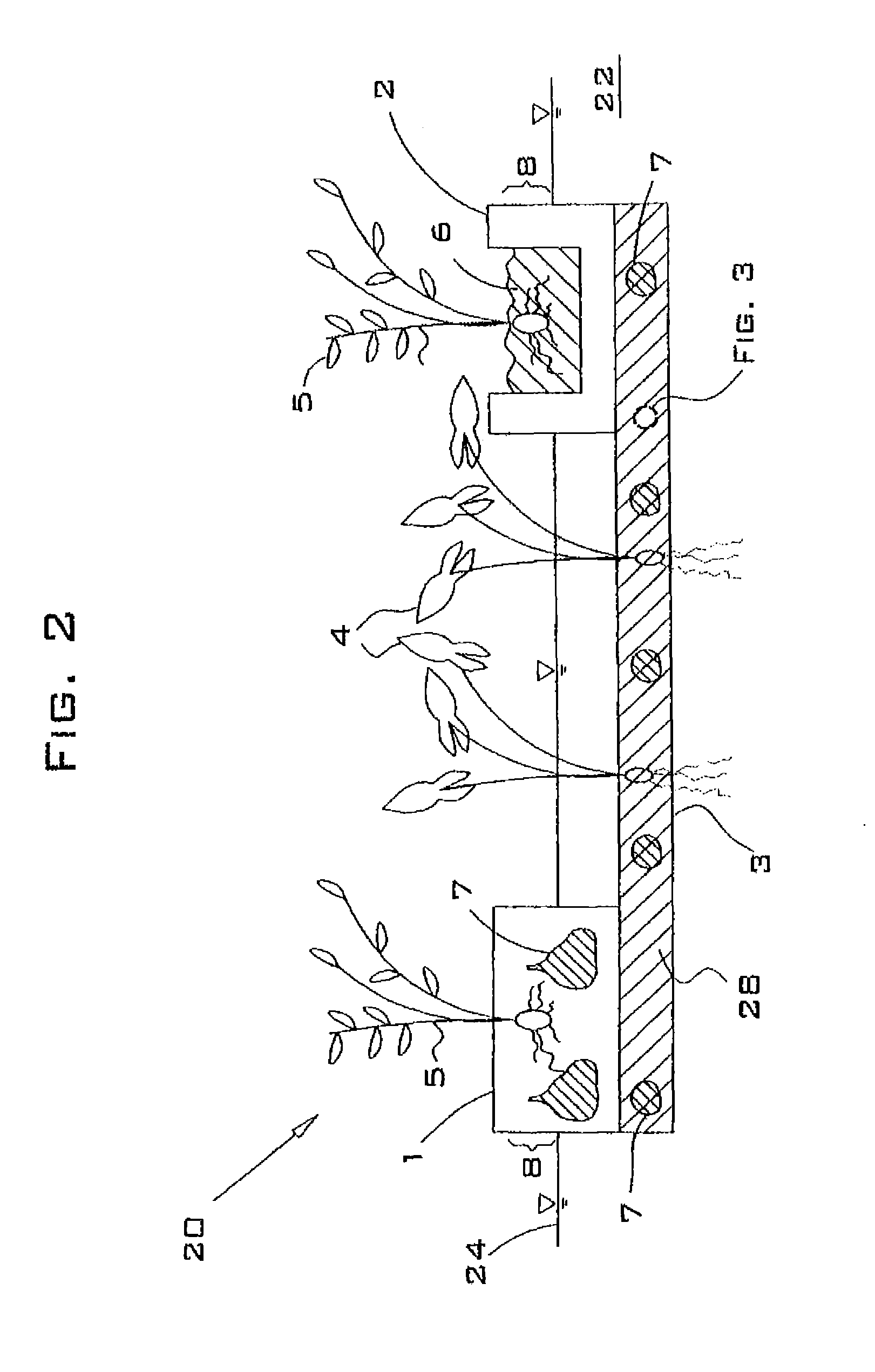Buoyant wetland system
a wetland system and floating technology, applied in horticulture, agriculture, agriculture gas emission reduction, etc., can solve problems such as wave action damage, and achieve the effect of high cos
- Summary
- Abstract
- Description
- Claims
- Application Information
AI Technical Summary
Benefits of technology
Problems solved by technology
Method used
Image
Examples
Embodiment Construction
[0048]Referring to FIG. 1, a preferred embodiment of buoyant habitat system 20 is illustrated. Solid elevated growing areas 1 and submerged (or submersible) growing area or island body 3 are comprised of solid pieces of non-woven polyester matrix or mat 28 with injected buoyant foam 7 (the mat 28 and foam 7 are shown in FIG. 2). Hollowed-out growing area 2 is comprised of outer ring 26 of non-woven (e.g., polyester) matrix that is filled with a portion of growth medium 6. Growth medium 6 may be comprised of any material suitable for sustaining plant growth, such as peat, topsoil, hydrophilic foam, or a combination of these materials.
[0049]In a preferred embodiment, the matrix or mat is comprised of 200-denier polyester fibers that are intertwined to form a blanket approximately 1¾ inch thick by 56 inches wide. The matrix is preferably produced in a continuous strip and cut to lengths of approximately 90 feet for shipping. Preferably, the nominal weight of the blanket is 41 ounces pe...
PUM
 Login to View More
Login to View More Abstract
Description
Claims
Application Information
 Login to View More
Login to View More - R&D
- Intellectual Property
- Life Sciences
- Materials
- Tech Scout
- Unparalleled Data Quality
- Higher Quality Content
- 60% Fewer Hallucinations
Browse by: Latest US Patents, China's latest patents, Technical Efficacy Thesaurus, Application Domain, Technology Topic, Popular Technical Reports.
© 2025 PatSnap. All rights reserved.Legal|Privacy policy|Modern Slavery Act Transparency Statement|Sitemap|About US| Contact US: help@patsnap.com



